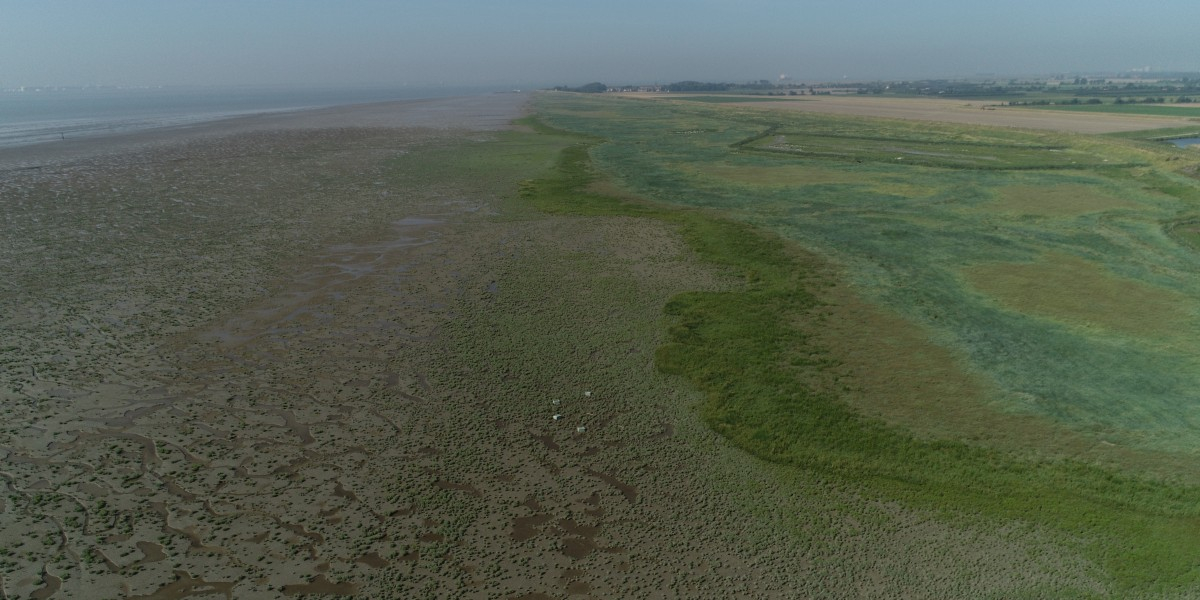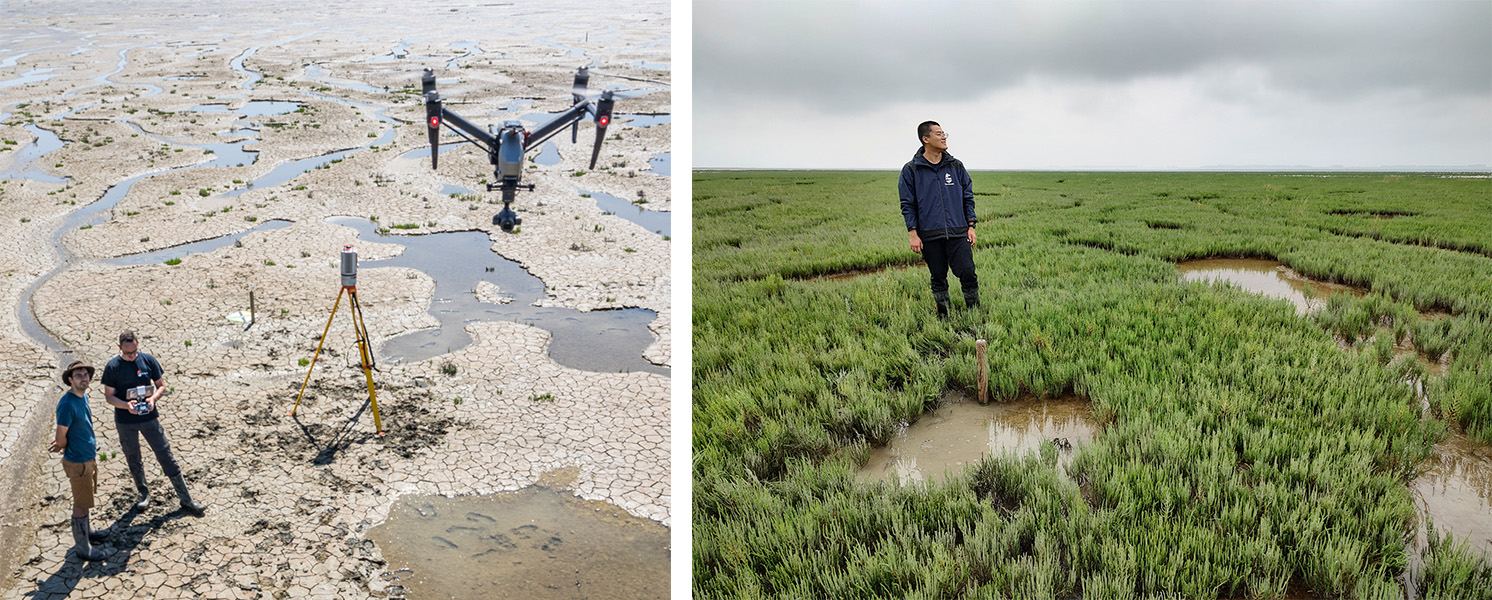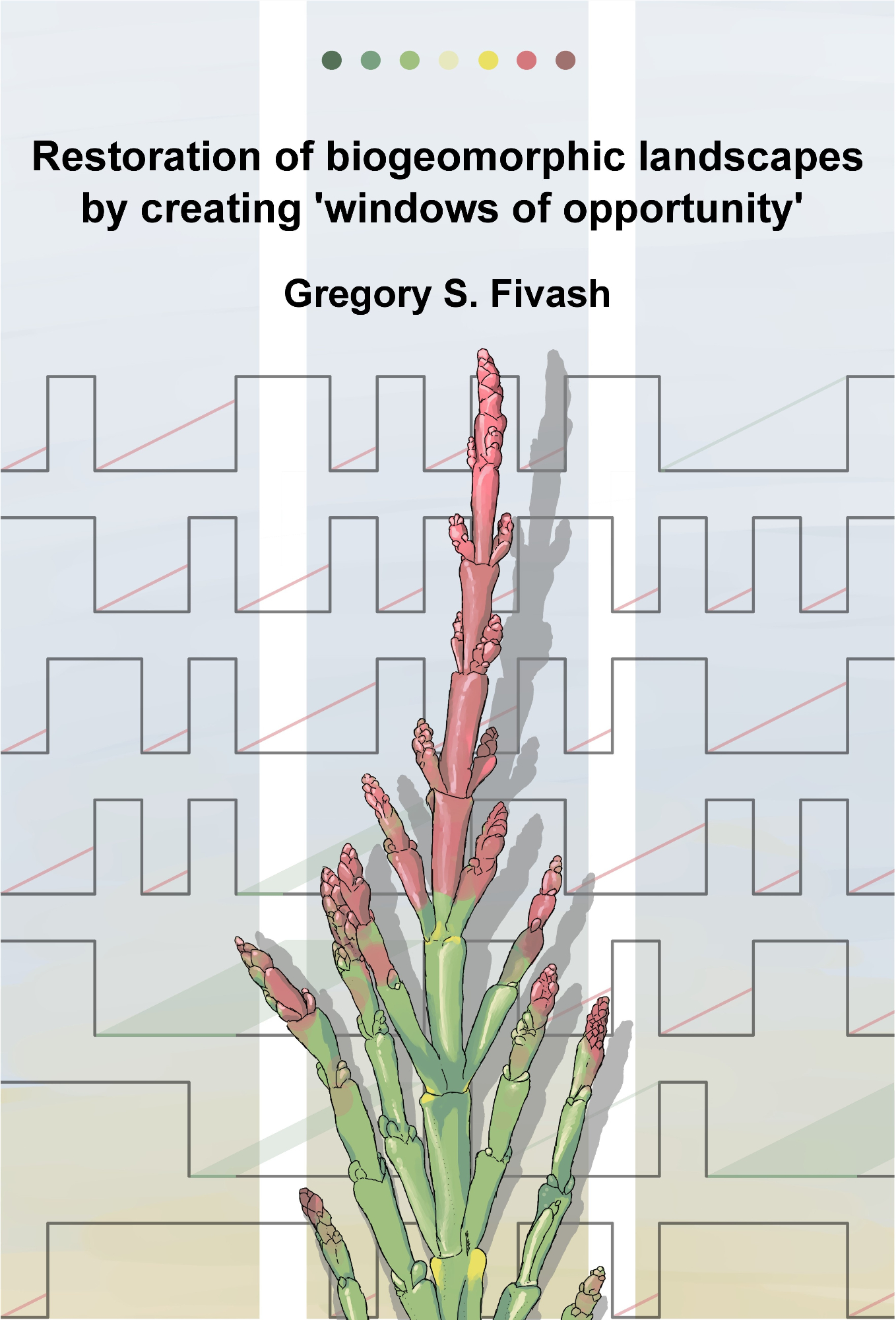Salt marshes tend to cover larger areas

In highly dynamic coastal zones like intertidal flats and salt marshes there is a challenge for vegetation to take control of the dynamics. Young pioneer plants must somehow survive the initially extreme environment before they grow stronger and become able to withstand storms or floods. Greg, as conservation ecologist, wanted to know how that is possible. He did field surveys and field experiments in intertidal areas. He did experiments in mesocosms in the lab in Yerseke. And he used aerial photos and 3D images of the intertidal flats. Computational models helped formulating his conclusions.
Surprising changes
Over the last years Greg noticed intriguing changes. “I see saltmarshes change from upper intertidal flats that feed migratory birds into higher, more vegetated marshes. Likely as a consequence of the dredging of the estuary, necessary for keeping shipping routes safe,” says Greg. “If this trend continues, we can foresee a vastly less dynamic estuary in the future.” With other words the estuary changes gradually to an environment with either a high intertidal marsh or a deep subtidal channel.
Greg’s research originally started with the aim of restoring salt marshes in order to integrate them into ‘nature-based’ flood defense projects. But in the process of understanding how natural establishment processes worked, he came to understand that ‘the forces at be’ were in the process of creating vastly more new salt marsh than could have ever been created through any of the research interventions. "We are in fact in danger of eventually having too much salt marsh, not too little.”

Solving regional challenges
Besides human induced climate change, there are also human induced regional changes. These changes generate often much more severe problems in the immediate term. But they are also more feasible to solve. “The issue of dredging, while contentious, is a problem with many conceivable solutions,” says Greg. “Understanding what ecological changes will take place allows us to translate our impact into changes in ecosystem services, like the increase of flood risk by channelizing the estuary. And there is the reduction of biodiversity in the estuary by shrinking intermediate intertidal habitats which we need to avoid to keep the ecosystem strong and vital.”
Dissertation: Restoration of biogeomorphic landscapes by creating ‘windows of opportunity’
Greg Fivash
Tuesday 18 October 2022 at 16:15h
Groningen University, Academy Building
Promotores: Prof. T.j. Bouma (NIOZ/ConsEco), Prof. T. van der Heide (ConsEco/NIOZ); copromotor: Dr W. Lengkeek (Bureau Waardenburg)
